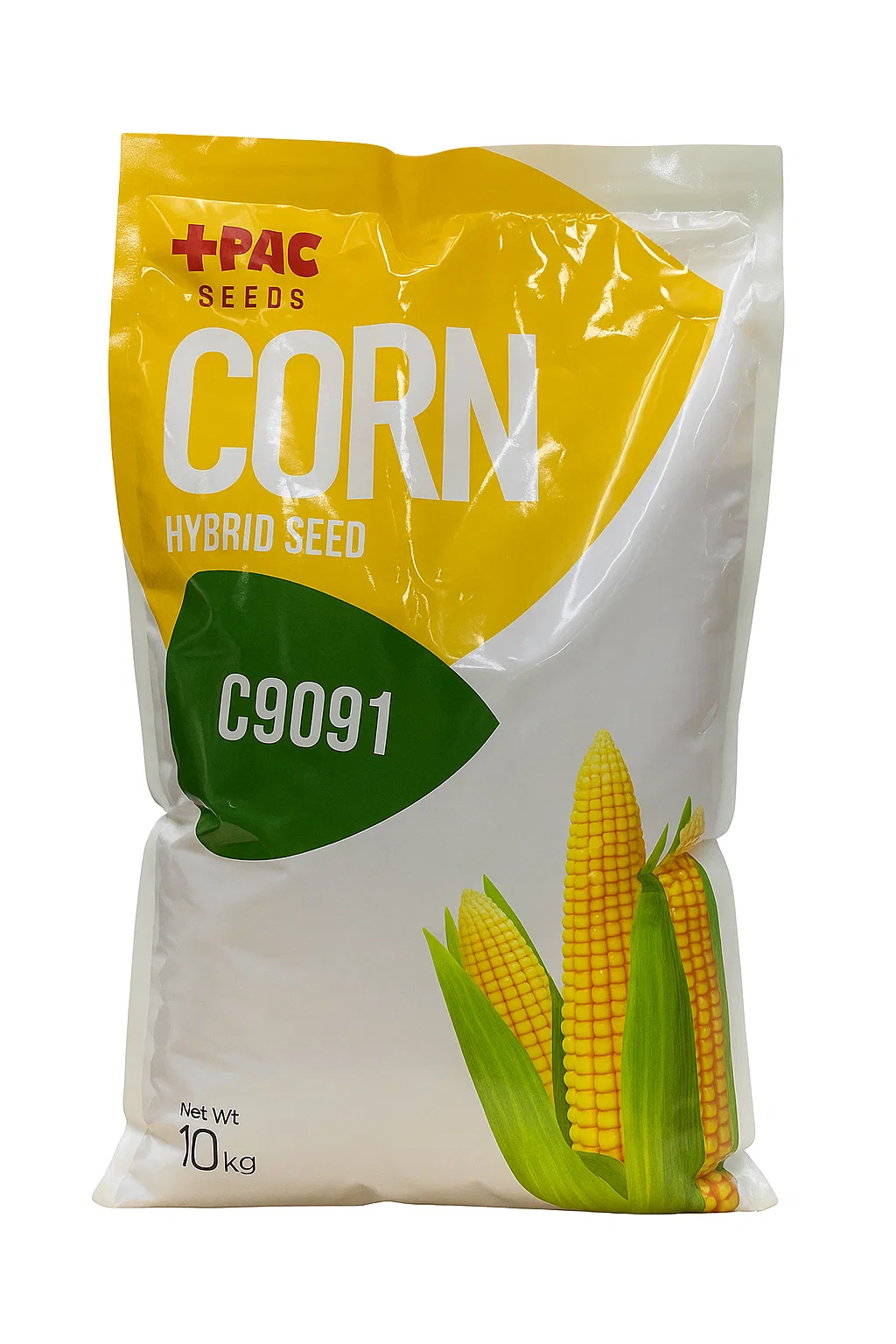In recent years, Pakistan’s agricultural sector has been facing growing challenges due to climate change, soil infertility, and water shortages. Farmers are struggling to maintain crop yields as traditional varieties fail to withstand changing weather conditions. Against this backdrop, Chinese Maize has emerged as a promising solution.
Chinese Maize is not just a crop—it is a symbol of technological advancement in agriculture. These hybrid seeds, developed through years of research in China, are designed to thrive even in difficult conditions. For a country like Pakistan, where maize is a critical staple for food, animal feed, and industry, the introduction of Chinese Maize could be a turning point.
This article explores the seven powerful benefits of Maize, its economic and environmental impacts, the role of government and research institutions, and the challenges Pakistan must address to fully benefit from this innovation.
Why Pakistan Needs Maize
Challenges in Local Maize Production
Pakistan’s maize production has traditionally relied on local seed varieties that offer limited resistance to pests and unpredictable weather. With increasing demand for maize in poultry feed, starch, and biofuels, these varieties cannot meet the growing needs. Chinese Maize provides an answer by offering higher yields and greater adaptability.
Climate Stress and Food Security
Rising temperatures and erratic rainfall patterns have reduced the productivity of traditional crops. Farmers in Punjab and Sindh often face crop failures due to drought or flooding. Chinse Maize, with its hybrid resilience, can secure harvests even in these challenging climates, improving national food security.
Rising Demand for Maize
Pakistan’s poultry sector alone consumes millions of tons of maize annually. As the demand rises, imports strain the economy. Introducing Maize on a large scale can reduce dependence on foreign maize imports while ensuring that local industries have a reliable supply chain.
Higher Yields with Chinese Maize
Yield Comparisons with Local Seeds
One of the biggest advantages of Maize is its yield potential. Traditional maize yields in Pakistan average 4 to 5 tons per hectare, while Maize hybrids can produce 8 to 10 tons under similar conditions. This doubling of productivity could transform rural incomes and national grain availability.
Case Studies of Successful Farmers
Pilot projects in Punjab have already demonstrated the potential of Maize. Farmers reported stronger stalks, fuller ears, and better grain weight compared to traditional seeds. The higher yields meant more income and a better return on investment for the same piece of land.
Scientific Validation
Research trials conducted in collaboration with agricultural universities have confirmed that Chinese Maize varieties consistently outperform local ones. These trials have attracted interest from policymakers eager to replicate success on a larger scale.
Climate Resilience of Chinese Maize
Drought Tolerance
One of the main reasons Maize is attracting attention is its drought resistance. With water scarcity worsening in Pakistan, crops that require less irrigation are crucial. Hybrid varieties from China are engineered to survive longer dry spells, allowing farmers to continue production even when canal water is unavailable.
Heat Resistance
As temperatures in southern Punjab and Sindh regularly exceed 45°C, traditional maize struggles to survive. Maize hybrids, however, have shown remarkable heat tolerance, maintaining grain development even in scorching conditions.
Better Adaptability
Maize also adapts well to different soil types. Whether in fertile plains or semi-arid zones, it has proven capable of thriving. This versatility makes it a reliable option for farmers across Pakistan’s diverse agricultural regions.
READ MORE:
https://freedompakistan.com.pk/
Economic Impact of Chinese Maize
Increased Farmer Income
By producing nearly double the yield, Chinese Maize ensures higher profitability for farmers. More output means more revenue, which improves livelihoods, reduces poverty, and boosts rural economies.
Boosting Exports
Pakistan has the potential to become a maize-exporting nation if it can scale production with Chinese Maize. Increased output not only meets local demand but also creates surplus for international markets.
Reducing Dependency on Imports
Currently, Pakistan imports maize and maize-based products to fill the domestic gap. By adopting Chinese Maize, the country can reduce import bills, saving precious foreign exchange while strengthening food sovereignty.
Environmental Advantages of Chinese Maize
Better Soil Utilization
Unlike traditional maize that depletes soil quickly, Maize hybrids are bred to make more efficient use of nutrients. This reduces the need for excessive fertilizer application.
Reduced Pesticide Use
Because Maize varieties have stronger natural resistance to pests, farmers use fewer pesticides. This lowers input costs while also reducing environmental pollution.
Sustainable Practices
With less water usage, lower chemical dependence, and higher efficiency, Maize contributes to sustainable farming practices that align with global climate-smart agriculture goals.
Government and Research Support
China–Pakistan Agricultural Partnerships
The collaboration between Chinese seed companies and Pakistani agricultural institutions has already begun. Joint ventures are producing and distributing Chinese Maize hybrids locally, making them more accessible to farmers.
Local Testing and Adaptation
Agricultural universities in Faisalabad, Multan, and Peshawar are conducting trials to adapt Chinese Maize hybrids to local conditions. These efforts ensure that farmers receive seeds optimized for Pakistan’s unique soil and climate.
Farmer Training Programs
Government agencies and private companies are organizing workshops to train farmers in modern techniques for cultivating Chinese Maize. From planting methods to irrigation efficiency, these programs are crucial for maximizing benefits.
Challenges in Adopting Chinese Maize
Cost of Seeds
The initial cost of Chinese Maize hybrids is higher than local seeds. Small farmers may find it difficult to afford them without subsidies or credit facilities.
Farmer Awareness Gaps
Many farmers are unaware of the benefits of Chinese Maize or lack technical knowledge to grow it effectively. Without proper awareness campaigns, adoption will remain limited.
Policy and Support Issues
Pakistan’s agricultural policies need to prioritize hybrid maize adoption. Without subsidies, research funding, and efficient distribution systems, the full potential of Chinese Maize may not be realized.
Long-Term Future of Chinese Maize in Pakistan
National Food Security Goals
Pakistan’s population is growing rapidly, and food security is a national priority. Chinese Maize could become a cornerstone of policies aimed at ensuring consistent grain supply for humans and animals alike.
Expanding Hybrid Cultivation
Currently, hybrid maize covers only part of Pakistan’s maize acreage. Expanding Chinese Maize cultivation across provinces can transform national agriculture within a decade.
Role in Climate Resilient Agriculture
As global warming intensifies, climate-resilient crops like Chinese Maize will be critical for survival. Its adoption represents a proactive step toward climate-smart agriculture in Pakistan.
Conclusion
The journey of Chinese Maize from research fields in China to farmlands in Pakistan signals a new era in agricultural collaboration. For Pakistani farmers, this crop offers higher yields, better resilience, and sustainable practices that can secure livelihoods and strengthen the economy.
However, challenges such as high seed costs, limited awareness, and policy gaps must be addressed to fully unlock its potential. With government support, farmer training, and regional cooperation, Chinese Maize can become a transformative force in Pakistan’s agriculture.
In the years to come, embracing Chinese Maize is not just an agricultural choice—it is a national necessity to secure food, economic stability, and resilience in the face of climate change.












